The yellow Lab is perhaps best known for its role as a guide dog for the blind. But the iconic Labrador Retriever is also one of the world’s favorite pets. Perhaps more than any other color, the yellow Lab has become associated with companionship and families. And also with the show ring.
We have kept yellow Labs as family pets and working companions for most of my life. I quite simply wouldn’t be without one. They are smart and loving, yet independent and confident. American yellow Labs tend to be a darker shade, more lithe and have a twitchy enthusiasm that keeps their brains and legs moving. English yellow Labradors on the other hand are paler, stockier, sillier yet somehow more laid back, and can’t wait to meet and greet another new best friend.
English vs American Yellow Labs
Many of the world’s most famous and successful “show” Labs have been yellow. These dogs are often referred to as English Labs. English Lab is simply the American name for the broad type of Lab favored in the show ring. Those Labs originally bred especially for hunting are called American Labradors.
They are still the same breed, but vary quite a bit in weight and body shape. Their temperaments are also a little different. American Labs tend to be a little calmer and less playful.
Where Do Yellow Labs Come From?
Your yellow Lab’s ancestors were taken to Newfoundland in the 18th century. Travelling with the amazingly tough people who traveled from England and settled there. These early dogs were hunting and fishing companions that split into two different breeds—the large Newfoundland dog, and the St. John’s dog, or ancestor of our Labs. Later, the St. John’s dogs were bought back to England where they were bred to create the breed we have today.
You probably know that the early Labs were usually black. This is partly because the genetic information that creates yellow Labs has to be present in both of a Labrador puppy’s parents for the puppy to grow yellow fur. But there were other, more sinister reasons.
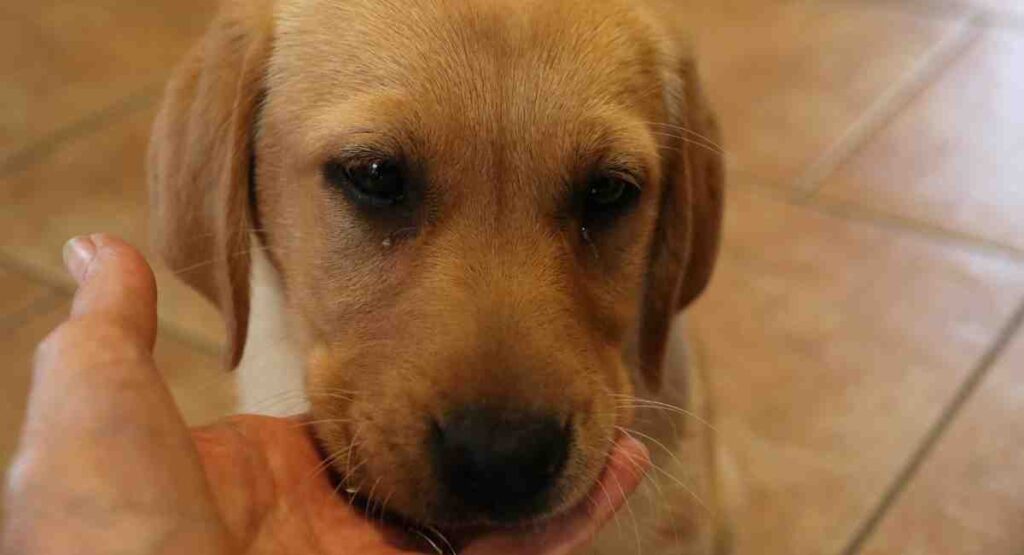
Early Yellow Labrador Breeders
To begin with, yellow Labs were not liked and many yellow lab puppies were probably culled by their breeders. This meant that for a long time, the yellow color was rare. The earliest known photo of a Yellow Lab is Ben of Hyde, the first recognised Yellow Labrador Retriever.
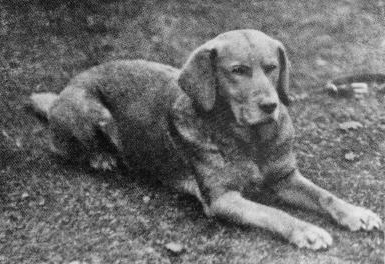
Labrador Retriever Colors – Many Shades of Yellow
You’ll probably have noticed that yellow Labs come in a wide variety of shades. These range from a creamy white, through pale buttermilk yellow, to gold and even the most intense fox red. For many years, the paler dogs were the most sought after.
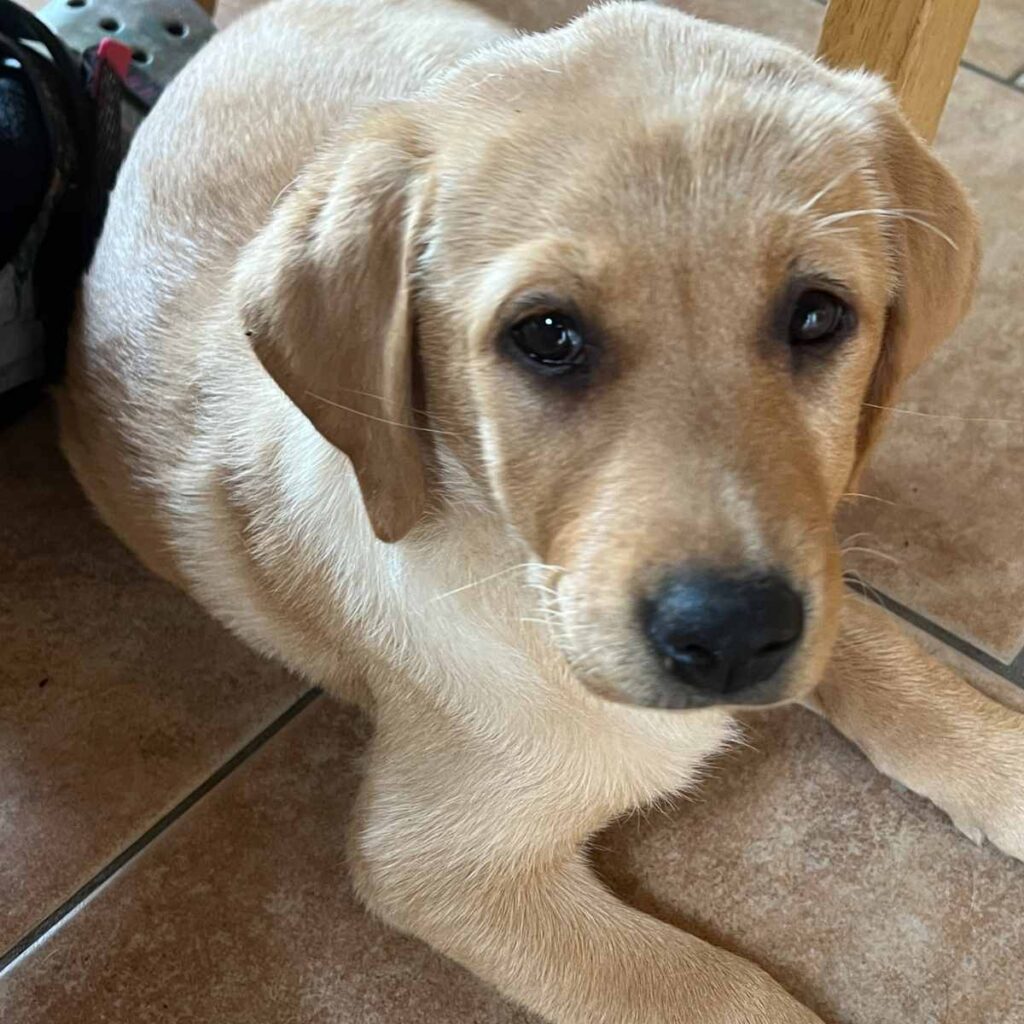
Yellow Lab Temperament
So we all agree that yellow Labs are cute. But what are they really like? You’ll be happy to hear that it’s mostly good news. Of course, just like with humans, Labs form their temperaments from a mix of genetic and environmental factors. It is wise then to pay keen attention to choosing a breeder.
After bringing your Lab home, you also have a role to play. Bond with your dog. If they have caring families and are well-treated, yellow Labs are more likely to be kind and gentle in return. Yellow Labs are also one of the easiest breeds to train. No wonder they serve as search and rescue, guide dogs, hunting buddies, and many more.
Golden Labradors
Deeper yellow puppies are often referred to as “golden labradors.”
However, most Labrador breeders don’t like the use of the word golden—the official term is plain old yellow. So, no matter what shade of yellow/gold/red your Labrador is, it is still “officially” a yellow Labrador. Despite all the variety, all these colors are registered with the AKC under the one heading—yellow Lab.
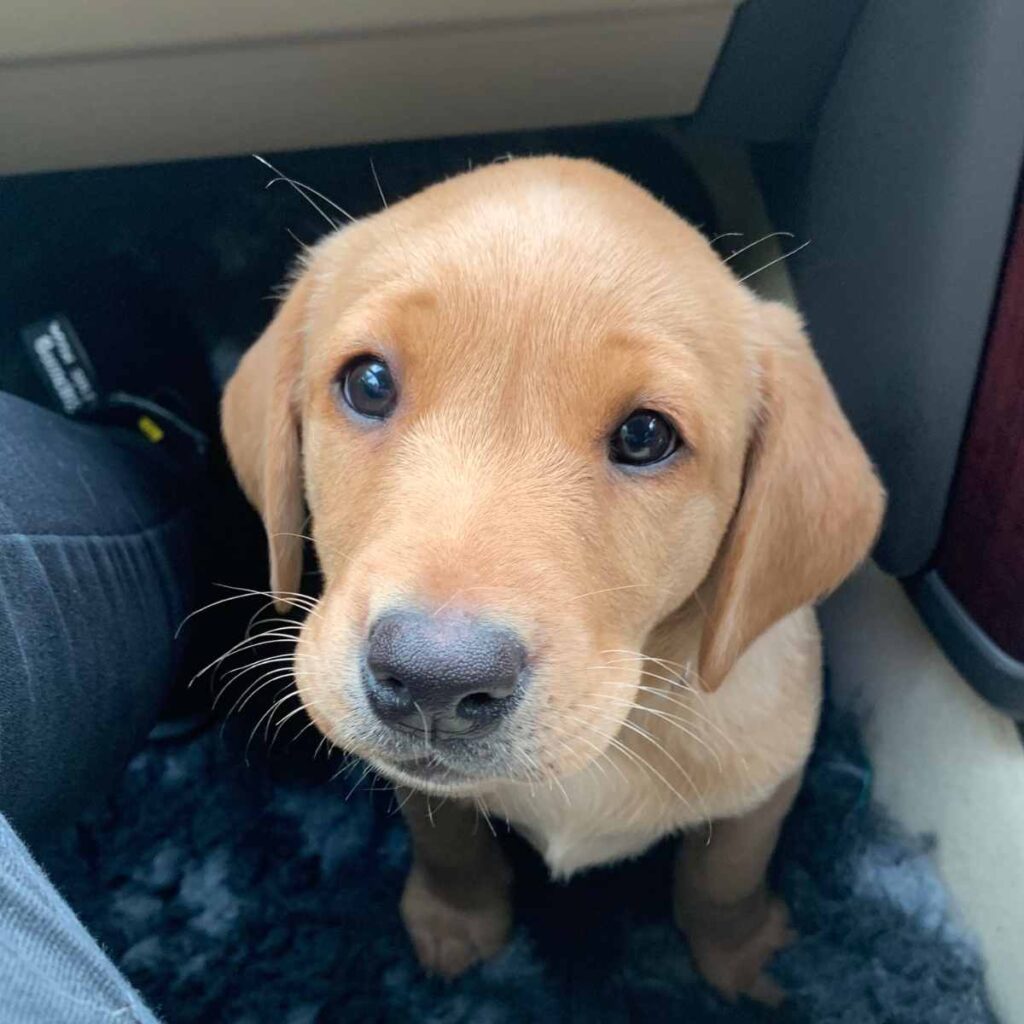
Do Yellow Labs Shed?
Labradors are well known for their rather excessive shedding tendencies. Yellow Labs shed just like their chocolate or black cousins, although it does tend to show up less on my carpets as the hairs are pale instead of dark. They do however require just as much grooming and coat attention to keep their shedding under control.
If you’re tired of finding fur from your yellow Lab everywhere, you can try a de-shedding tool. The furminator is one of our favorites. This video below shows how it can be used.
Famous Yellow Labs
One of the happy memories of my childhood was of reading The Incredible Journey by Sheila Burnford. That book planted a desire in me for a yellow Lab like Luath.
There is no shortage of yellow Lab heroes in literature and on the screen. No one could forget Marley in the film Marley and Me. And in the UK, possibly the most famous dog of all time is Endal, the highly decorated yellow Lab service dog who died in 2009.
My own yellow Lab today is a fox-red girl. She’s going grey now and is quite different in appearance from the Luath of my childhood dreams. But her wonderful yellow lab temperament still shines through. And like all yellow Lab owners, I wouldn’t part with her for the world.
Yellow Lab Rescue

What better way to find the yellow Lab of your dreams than to rescue a beautiful yellow Lab from a shelter or Labrador Rescue Society. Rescuing an adult Lab gives a dog a second chance at love and family life. It also gives you a chance to have a dog of your own without going through the challenges of puppy raising.
We have an extensive list of Labrador Rescue societies for you to browse linked at the bottom of this article. If you’ve set your heart on a yellow Lab puppy, you’ll find plenty of help with finding your new friend right here on this website
Searching for Yellow Lab Puppies
Finding a reputable Labrador breeder is an important first step when you’re looking for a litter of yellow Lab puppies. Again, it’s so important to find a good breeder because Labs of any color can be susceptible to a range of inherited diseases.
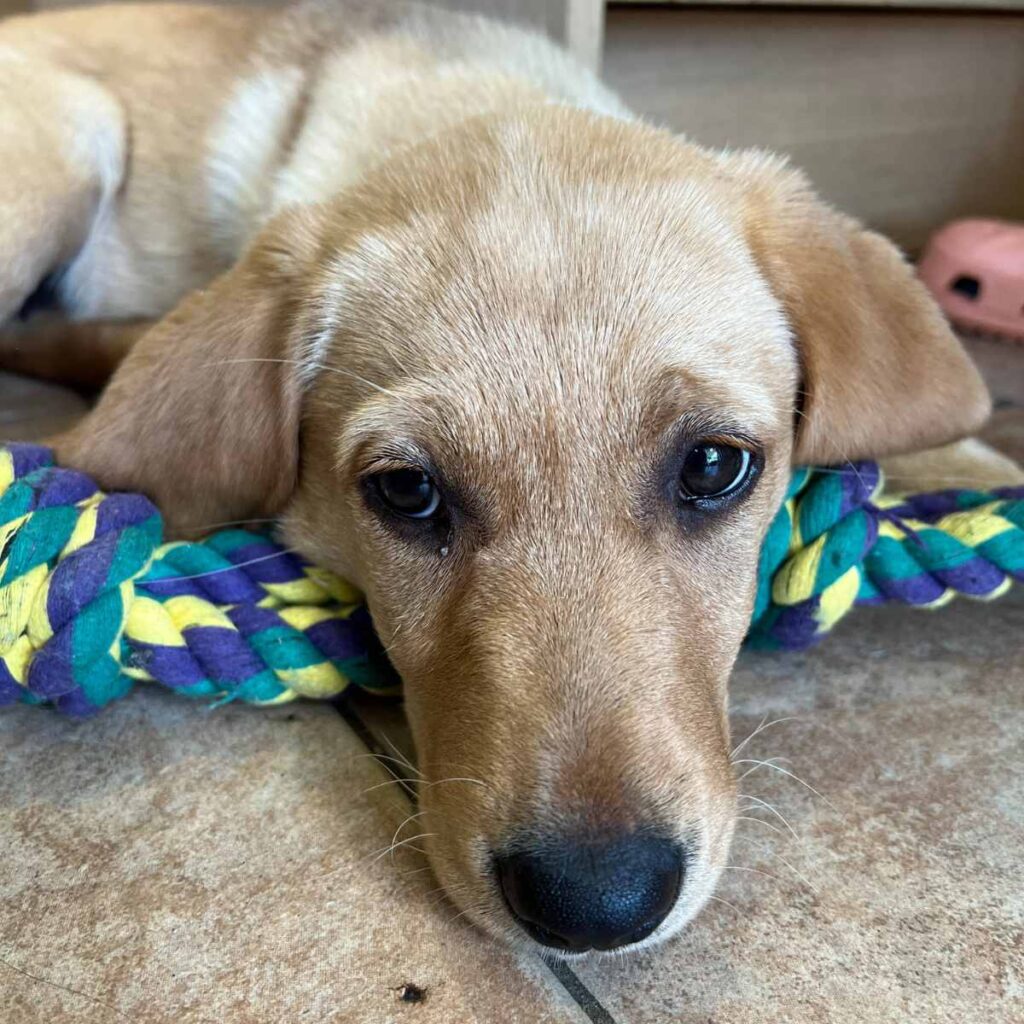
The good news is that many of these diseases can be avoided by picking puppies whose parents have been health tested clear of each disease. The bad news is that not all Labrador breeders of the purebred yellow Labrador Retriever use these tests.
The tests are quite expensive and some breeders are ignorant about their value, while others simply don’t care. So, before you begin your search for the yellow Lab puppy of your dreams, do check out our important information on finding a good breeder.
Female Yellow Lab or Yellow Lab Dog?
If you need some help deciding whether to choose a female yellow Lab or a boy puppy, we can help. In terms of temperaments they will be very alike. With more differences between American and English Labs than there are between males and females.
Males will often be a little taller and heavier, but this won’t always be true. Female yellow Labs might need spaying, or to be managed differently during their season.
Male Labs can be neutered, but this procedure needs to be weighed up as there are some major downsides. But fundamentally, the choice is just down to personal preference.

Yellow Labrador Health
It’s never fun when our furry family member is ill. Still, it’s impossible to prevent illness, both for humans and our pets. Our best bet then is to find a breed with as few major health issues as possible. The yellow Lab is an excellent choice in this case.
There are, however, at least three main health issues you should be aware of. Yellow Labs are especially prone to the following:
- Ear troubles: Thanks to those cute floppy ears, ear infections abound with yellow Labs.
- Joint issues: Despite being pretty strong dogs, yellow Labs are genetically predisposed to joint problems including hip dysplasia.
- Obesity: Because of their (excessively) healthy appetite, yellow Labs (and Labs generally) can become overweight.
Does this mean you shouldn’t get a yellow Lab? Absolutely not. Their issues are few compared to other dog breeds. Besides, knowing of the issues helps dog owners to stay alert to any changes in their Lab’s health.
- Do make sure you have read up on Labrador health problems before buying a puppy.
- Choose a breeder that health tests the parents and ask for proof of these checks.
- This is particularly important to improve the odds of your pup having good hips.
If you want to find out more, you can also take a look at our guide to Labrador lifespan.

Pictures of Yellow Labs
We never get tired of looking at pictures of yellow labs. They come in so many beautiful shades—there is a color to suit everyone One of our most popular articles is a celebration of these beautiful dogs, full of yellow Lab photos in all the different varieties available.
Yellow Labrador Names
If you are still undecided as to what to name your new yellow Lab puppy, we’ve got you covered!
Our Labrador names page is packed with suggestions for wonderful puppy names for yellow, red, and golden dogs. You should be able to find what you need.
Yellow Lab—a Perfect Companion
In many ways, the yellow Lab is simply the perfect companion for any active family with the time and space to enjoy this wonderful breed. If you are not sure whether you’re ready to bring a yellow Lab into your life, do check out our helpful guides:
- Are you ready for a Labrador
- Six things to consider before getting a Lab
- How to raise a puppy when you work full time
- Bathing and grooming your Lab
- Labrador puppies
Related Articles
- Color inheritance
- Yellow Lab Shades
- Fox Red Labradors
- White Labs
- Labrador History
- English Labs
- American Labradors
- Labrador Colors
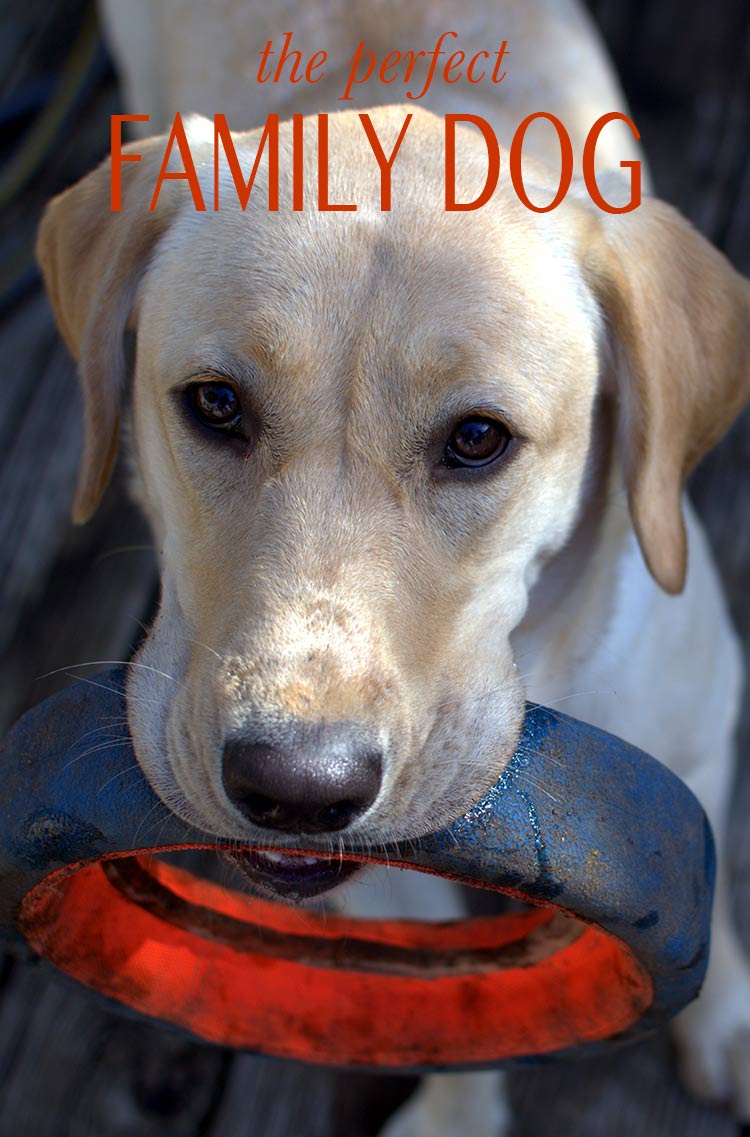
References:
- Canine Genetics and Epidemiology. McGreevy, P. D. et al., Labrador retrievers under primary veterinary care in the UK: demography, mortality, and disorders (2018).
- Applied Animal Behavior Science. Lofgren S.E. et al., Management and personality in Labrador Retriever dogs (2014).
- Applied Animal Behavioral Science. Mehrkam, L. R., Wynne, C. D. L., Behavioral differences among breeds of domestic dogs (Canis lupus familiaris): Current status of the science (2014).
- Bellwether Magazine. West, N.,Ensuring Healthy Guide Dogs for The Seeing Eye (2005).
- Anthrozoös. Wells, D. L., The facilitation of social interactions by domestic dogs (2004).
The Labrador Site Founder
Pippa Mattinson is the best selling author of The Happy Puppy Handbook, the Labrador Handbook, Choosing The Perfect Puppy, and Total Recall.
She is also the founder of the Gundog Trust and the Dogsnet Online Training Program
Pippa's online training courses were launched in 2019 and you can find the latest course dates on the Dogsnet website

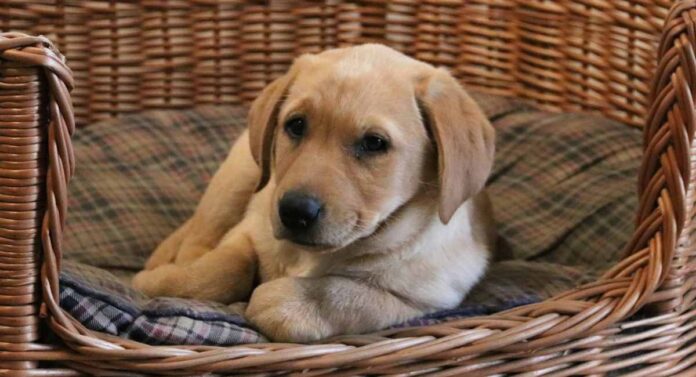




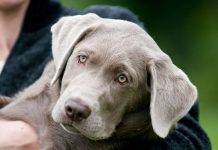



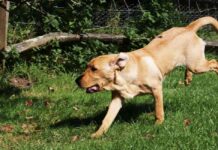








i have a yellow female, rescued and about 10 years old. She is overweight some and acts like she is hot all the time, even in the home. She is a jewel and I wonder if others have pups that act hot most of the time?
I love labs. We had 2, a black Roxy and yellow Shasta. We loved both of them. They both passed 2 years ago after 16 years of great companionship. I’m 65 now and can’t get myself to get another lab. I miss our dogs everyday.
I love reading your blog! I have a yellow lab and he is the best dog ever!
I just got my lab and he is great his name is Hank he is a year old and love to play all the time I got him just by luck someone was giving him away and I got him and give him a loving home with my other dog she is old and setting her ways but she is happy to have a friend to play with this is my first lab my whole life and he is wonderful he was already potty trained and a year old when I got him.
i am thinking about getting a golden labrador.I wanna know:what are the beast names for a girl lab? what are there goods or bads?
Hi I have had yellow labs all my life and always girls. Never had an issue with pee training them. but my new lab girl 3 months old just doesnt seem to get pee trained and I have tried everything. She makes it a point to go in the living room and not anywhere else. Please help!
Hi I brought a yellow lab KABIR who is just 42 days old. Please mention the homemade food we can give him.
Hello…we rescued our yellow lab puppy at 10 weeks old (litter of 11 pups) all were quarantined for about 10 days due to the conditions they came from. Autumn is going on 8 months now and weighs just about 60 lbs so she’s a big strong girl, absolutely gorgeous! She’s very light, creamy in color with beautiful green eyes. Lots of energy, love and very smart. We’re working on manners and distractions. She was easy to potty train, with bell training. She’s great with my teenage kids, a little hesitant on car rides but we’re working on that, loves tennis balls, running the yard, her puppy food, walks, socks, and would do anything for a treat. We love her unconditionally ❤️
We’ve had two Golden Retrievers over the last
25 years and absolutely love the breed, labs are very similar yet very different.
I got my Yellow Lab his name is Buddy. We picked him up when he was an even year old on his birthday. He spent the first year of his life in a dog cage. His old family just did not have the area and the time to give the dog a real place with love. When we got him home and he had a house that was 2000 sq. ft. he went nuts. He ran all around the house like a loon a tick. Let me tell you he ended up being the greatest gift I have ever gotten. He is a great watch dog and a very protective of me and my wife. Well he just turned 2 years old. He loves to play all day long. That’s is the truth. But he returns lots of love for our efforts. So please folks if you get a chance to pick one up. Jump at that chance you will not regret it. I promise you that.
Labs are the best! Good luck with Buddy he sounds like a beautiful happy dog
Hi, I have a yellow 7 month old female yellow lab. She is my 4th lab in my lifetime, and possibly my last due to my age. My husband and I have raised 4 sons, so I had to have a girl this time. I had two boy labs, and two girls. I love both, but am partial to the female now. Her name is Abigail, and we call her Abby. I love her so much. Had to put my 13 year old girl to sleep this past summer – Annabelle. She was amazing. These dogs are so intelligent, affectionate and just perfect. I can’t imagine a life without my dog. We don’t even care about traveling far. I bring her everywhere. Hope everyone is enjoying their beautiful labs.
I’m looking to purchase a English yellow lab. Probably a female. We’ve had labs for 51 years. Need some show dog breeders to email me
LOVE ALL DOGS BUT PARTIAL TO LABS. HOWEVER, WE HAD A MIX WE RESCUED AND SHE WAS THE SAME PERSONALITY AS OUR LAB. THEY ARE THE BEST DOGS. WE ARE A LAB FAMILY. BETWEEN OUR SON AND DAUGHTER THEY HAVE 5 LABS. SUCH FUN AND SO LOVEABLE.
I HAVE ONE COMPLAINT ABOUT ALL FEMALE dogs. The term they use when referring to the female. I hope one day someone will be able to change it. It sounds, so hard, cruel and nasty when referring to these beautiful creatures. 🙂
Daisy would be a good name for a yellow lab or sunny. Our local rescue has one but cant get my husband on board. We had a chocolate and black siblings I love the Breed.
Daisy is a good name for a dog. Our dog was Daisy but she was a German Wirehaired and tipped the scales at 90 pounds and was 26″ at the shoulder. She suddenly died June 9th and was 10 years old. Then the next Tuesday June 16 we had to have her father Kieger put down, also a German Wirehaired
and just turned 13 . He was a huge but loving dog who at one time weighted 106 and he was 27″ at the shoulder and his feet measured 3.5″ across. We miss them terribly and can’t believe they are both gone leaving us dogless.
I am waiting for a senior retriever. I believe senior or adults doggie deserve gentle love.
I have put a few posts over the last couple of years. We have a yellow Labrador cross Golden Retriever. His name is Monty. He is 5 years old. We bought him after a home invasion.. we were at home at the time. I was somewhat reluctant to get a dog because of the break-in. He is the first dog I have ever had in my life which is getting the pointy end my life travels. I had never understood what the fuss was all about with having a dog. Now I do. This beautiful animal has dug a hole in my heart and he has buried himself there forever. I must go back and say he is not a guard dog and I will never ever let him get in harms way. He is a fantastic watchdog with a huge woof…which is enough. I am so grateful to have him. He receives a disproportionate amount of attention. He sleeps on our bed at night. We will not leave him alone for longer than 12 hours. We will not go away for holidays unless he can be included. Over the top…yes.. do we care being over the top…no. The labrador breed is sensational and we are so lucky as human beings to have these wonderful animals as life companions. Thank you Pippa for having a very special forum and site we as Labrador owners can share our love of the these special creatures. Bless
Hello. Hoping someone can assist with my lab. He will be 19 months on 28th July. He barks excessively at night. There are no other dogs barking at the time & sometimes it sounds like he’s grumbling.
I don’t really want to have him sleep indoors & also don’t wish for him to be neutered.
Any advice please?
My yellow lab all of a sudden has a pink spot on the ‘eyeliner’ around her eye. is this common and should i be concerned? she’s 2 1/2
Hi there, I have 3 months old yellow Male Lab named “Bruno” ; he is too naughty and always chews some or other thing, despite have lot of toys for him.
The problem we face is evening after dinner, he goes violent to the extent tries biting us don’t know why…Any suggestion…???
Too much energy. My guy did the same thing as a pup. I would think based on what you stated that he is just roughhousing when biting. Most dogs have a “playing” bite as compared to actually trying to bite. There is a huge difference. You need to find ways for him to get rid of the excess energy, walks and going to a dog park to run are what I did and it really helped. Plus, the social aspect of being around other dogs is a good thing. Hope this helps.
I would like to know if it is alright to feed my yellow lab raw venison bones?
Hi Kenneth, This article might be of help in making your decision: https://www.thelabradorsite.com/raw-feeding-for-dogs/
I need more articles on training yellow lab puppy who is 4 months old.
My Labrador is 8 months old and he has angel wings too!
You don’t mention the Yellow Lab’s “Angel Wings”. My 11yr old Chelsea has them
I have a 4 and a half year old yellow lab and we enjoy every minute with him. He loves hiking and food very good family dog and well behaved couldn’t as for a better dog. His name is Jersey and he’s a male..
Love the name!
I want a puppy how do I convince my mom to buy me one
Hi Belle, Puppies are an enormous commitment, so your Mom needs to really want one herself in order to get one. You can find out more about what is involved in looking after a puppy in these articles:
https://www.thelabradorsite.com/6-things-to-consider-before-buying-a-labrador/
https://www.thelabradorsite.com/are-you-ready-for-a-labrador/
https://www.thelabradorsite.com/what-to-expect-of-a-new-labrador-puppy/
The puppies section of the website has lots more information, which you and your Mom can look at together if she is interested in learning more and considering the option of getting a dog.
Our 13 year old son named our yellow lab ‘Sahara’.
Great name Irene. My 24 yr old son named our Yellow Kab Puppy Carson
Molly is a good name for a girl Golden Labrador
i am thinking about getting a golden labrador.I wanna know:what are the beast names for a girl lab? what are there goods or bads?
We are thinking of buying one that our neighbor cannot keep. She is a yellow lab with blue eyes. She looks like a Lola.
I have a golden labrador! His name is leo
My 6 months and 3 weeks old female yellow lab is 22 inches tall and 55 lbs. will she get any taller? I’m sure she will gain more weight once she starts filling out. When do lab puppies usually start to fill out?
Hi Austin,
Here is the Puppy Growthpage
Pippa
Hello, I love my Yellow Labrador too, his name is Matthew and have 8 years old. In this moment I make a web page of him. You can visit and will find photos of him and other dogs
I just want to know one thing. Can Labradors have more than one litter of puppies